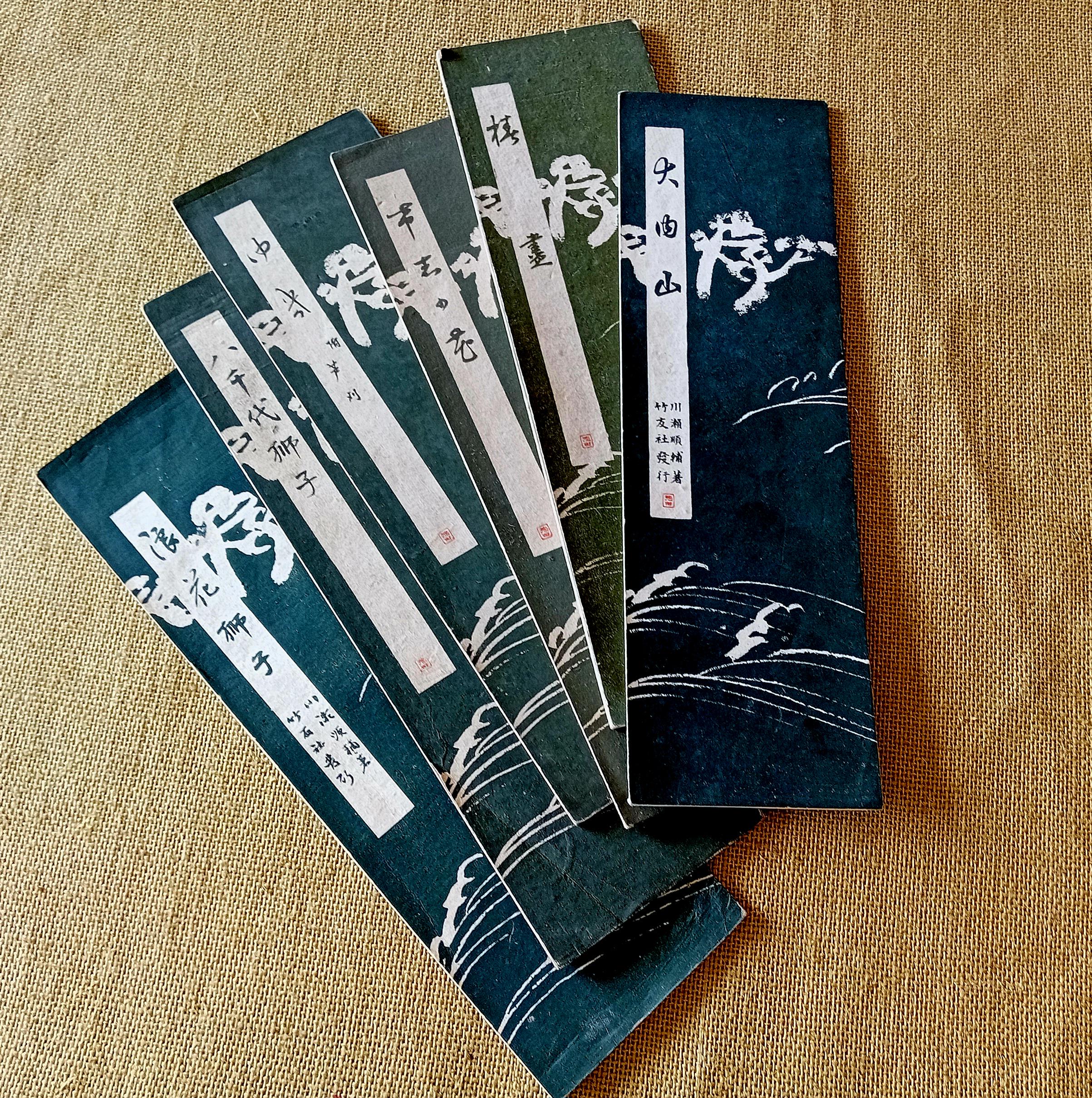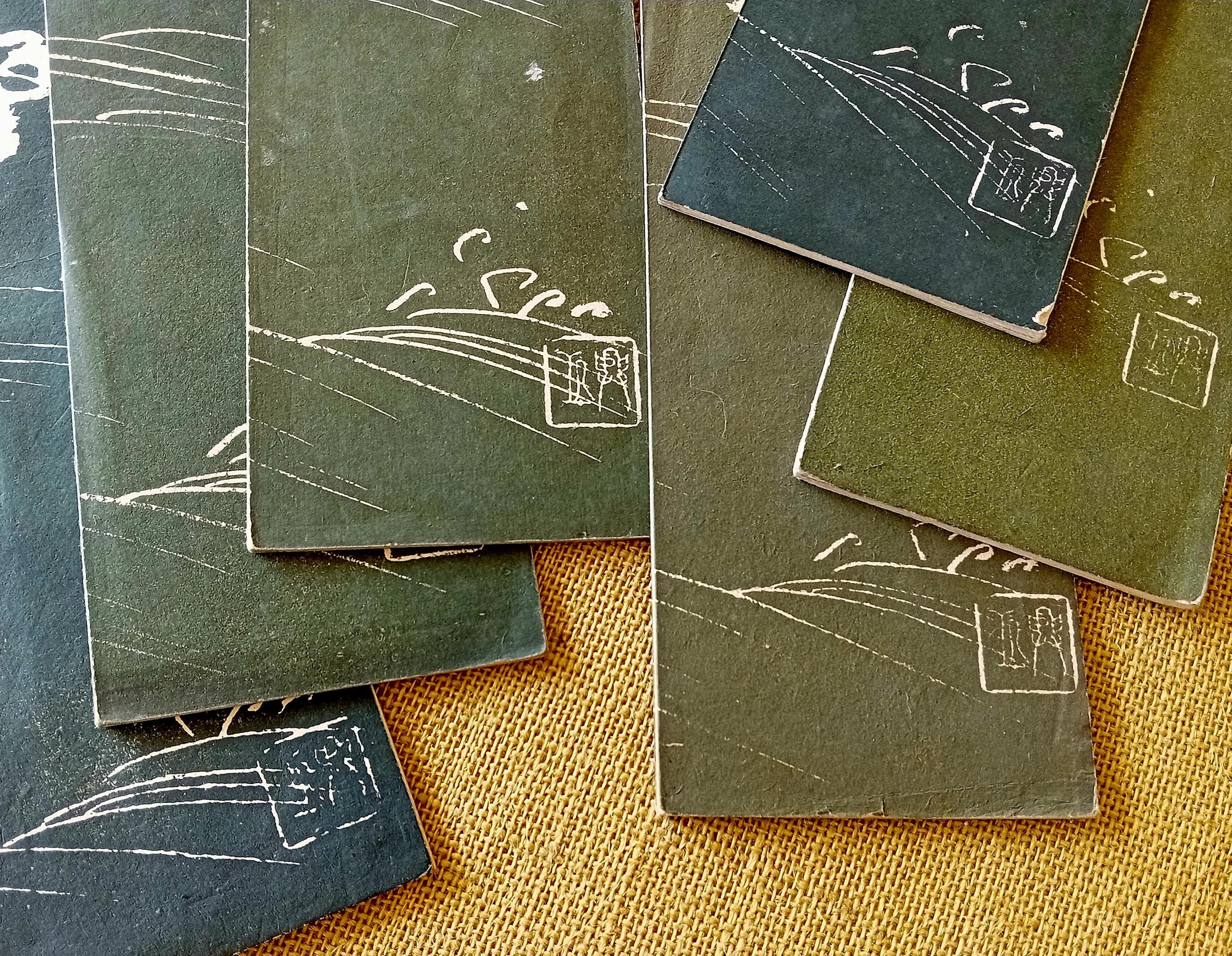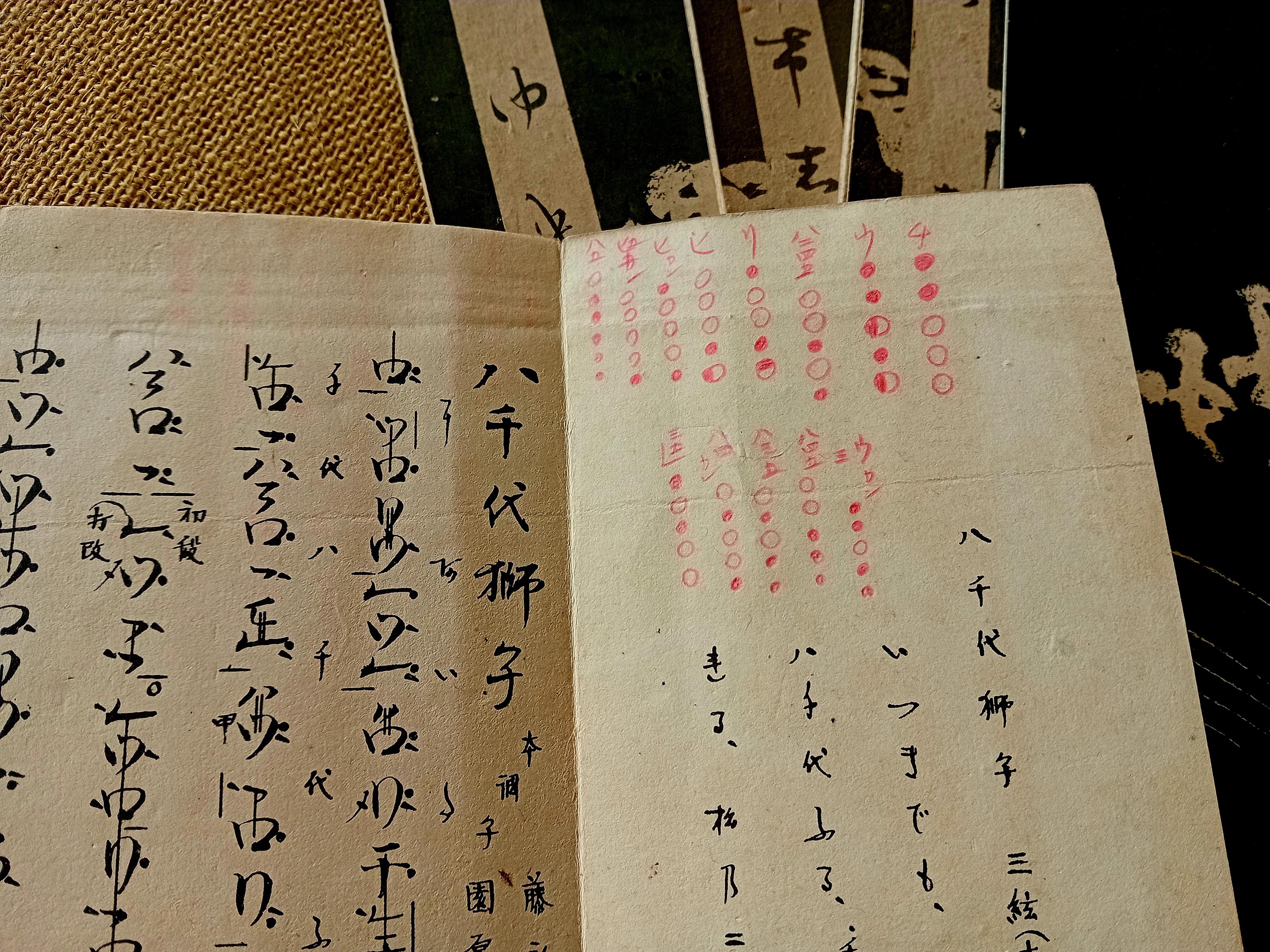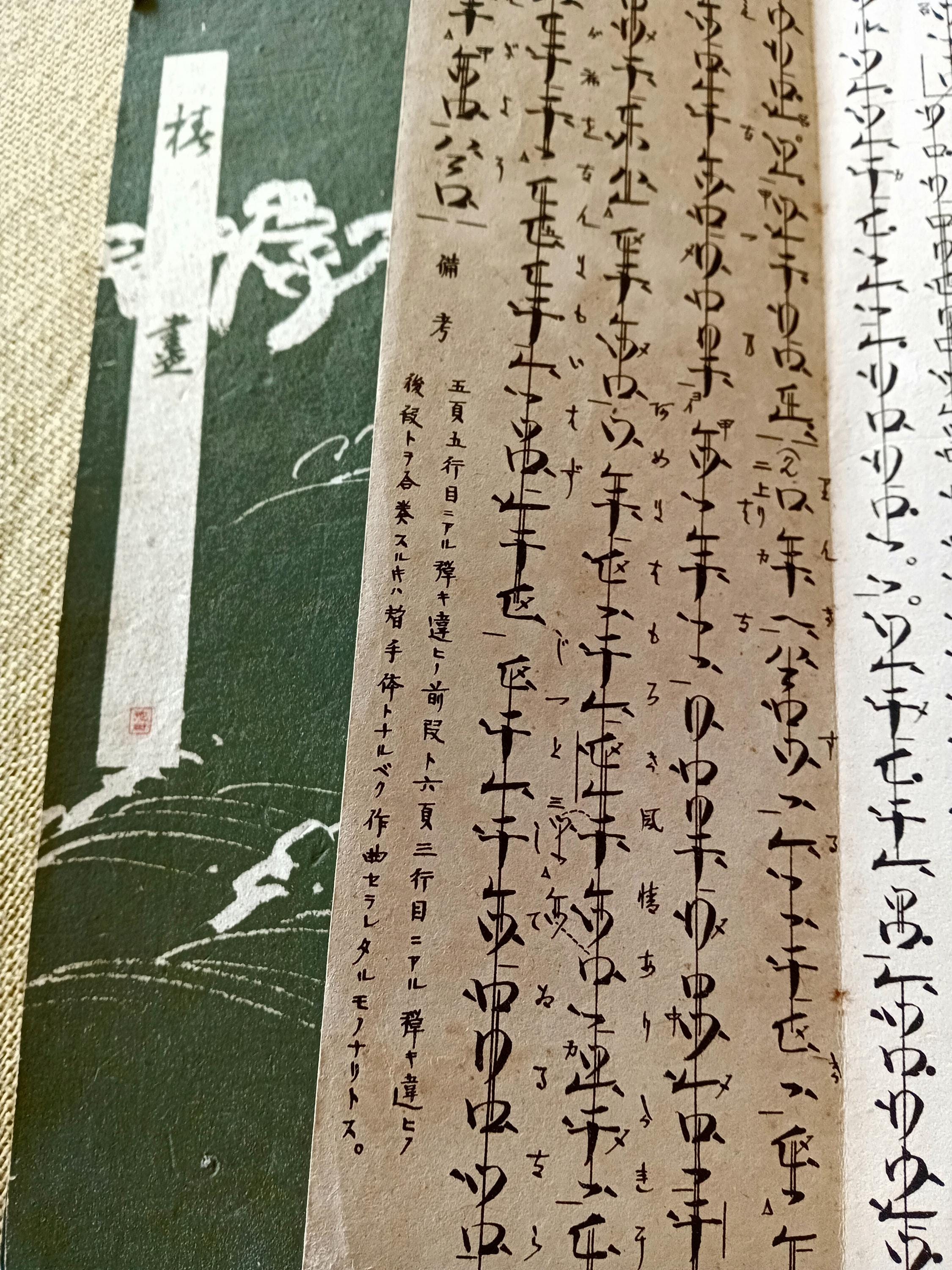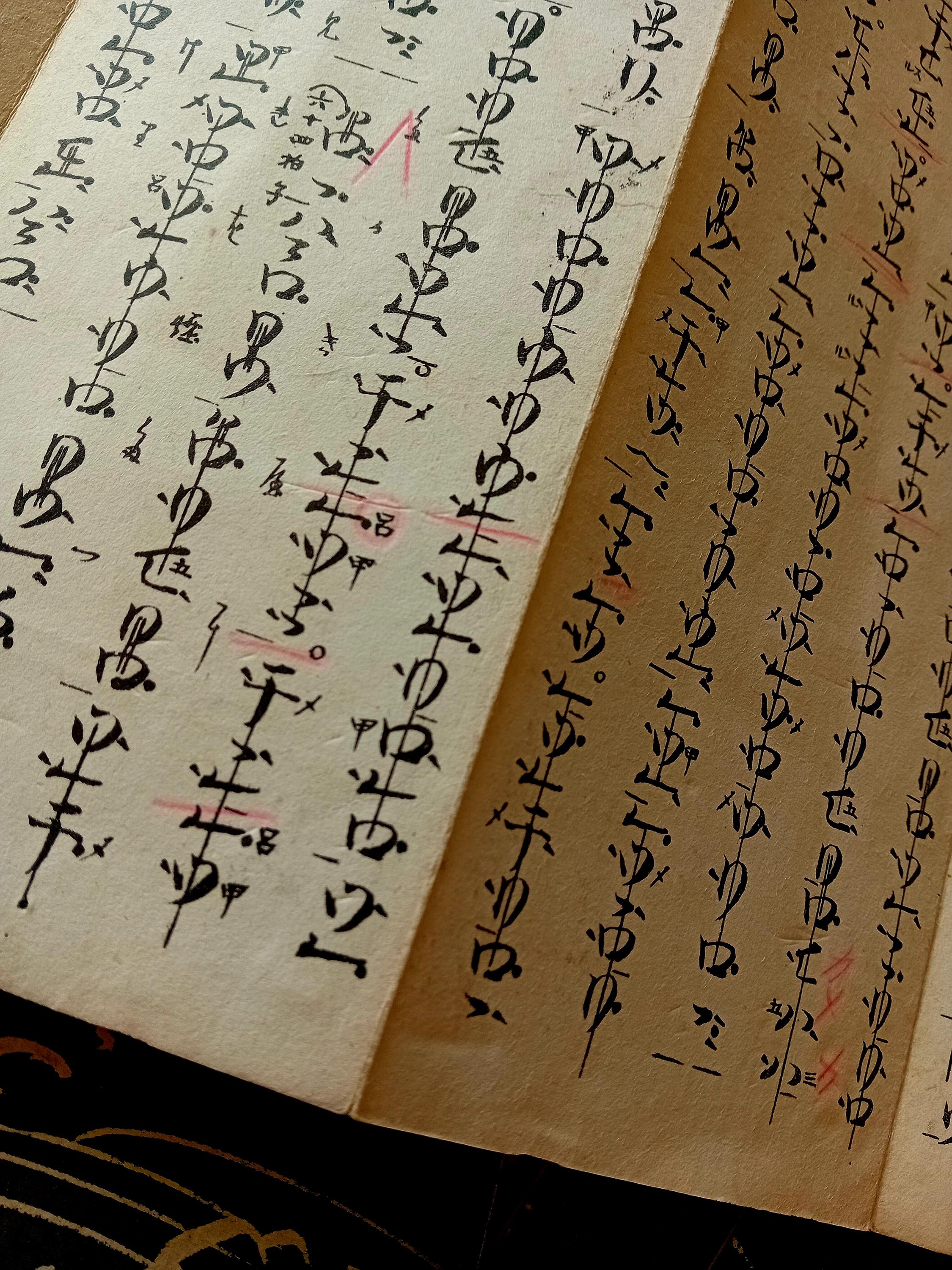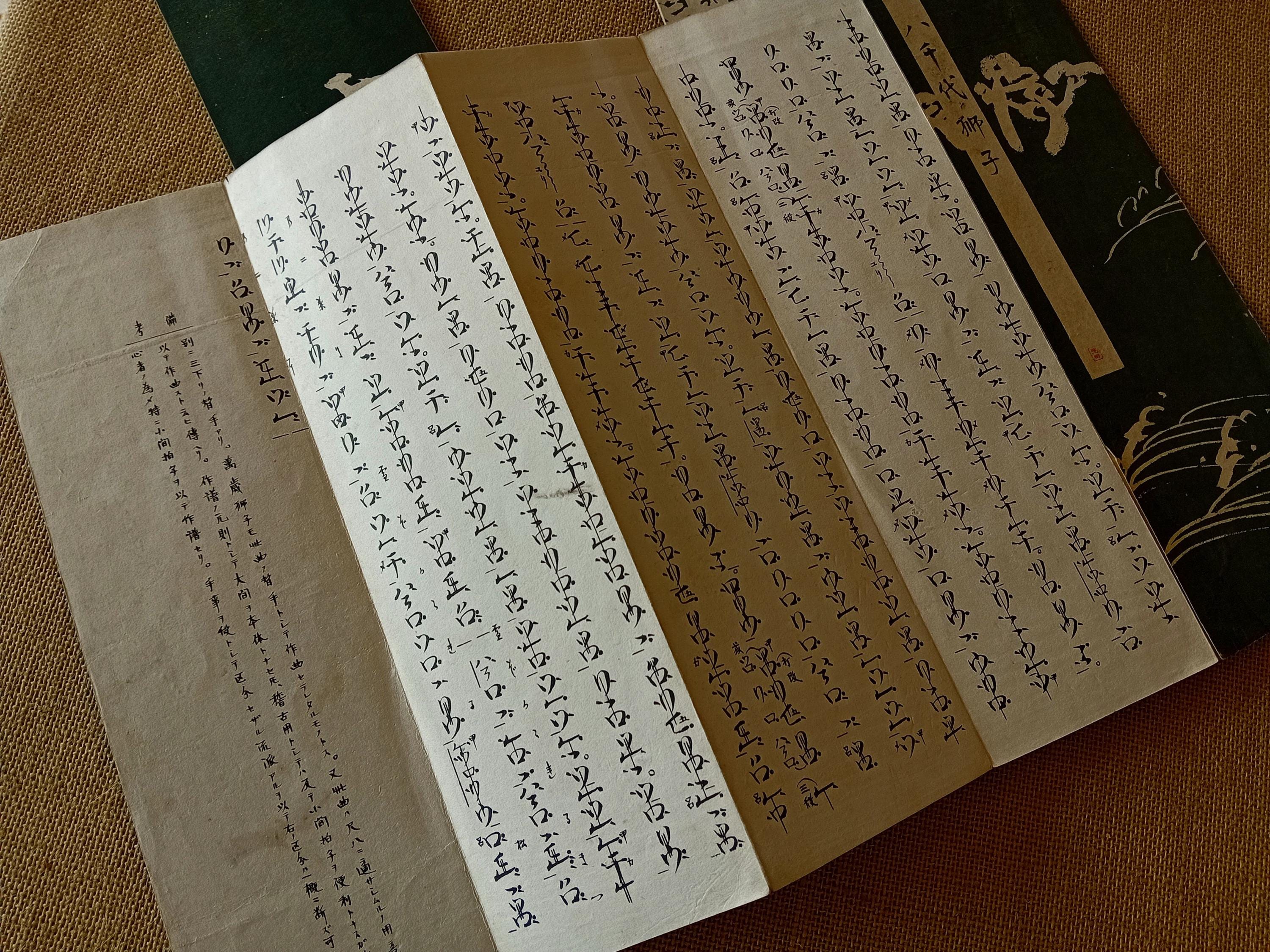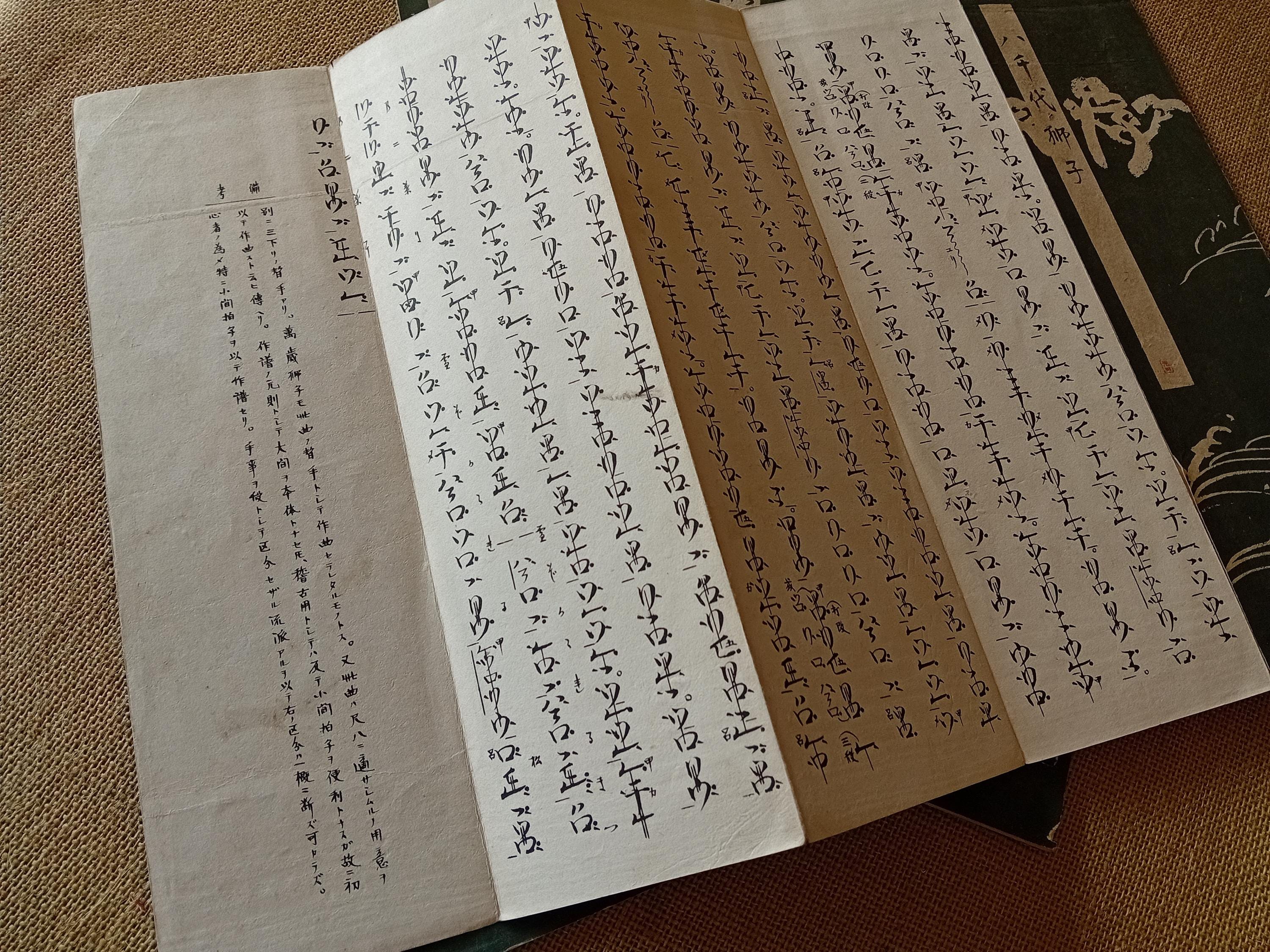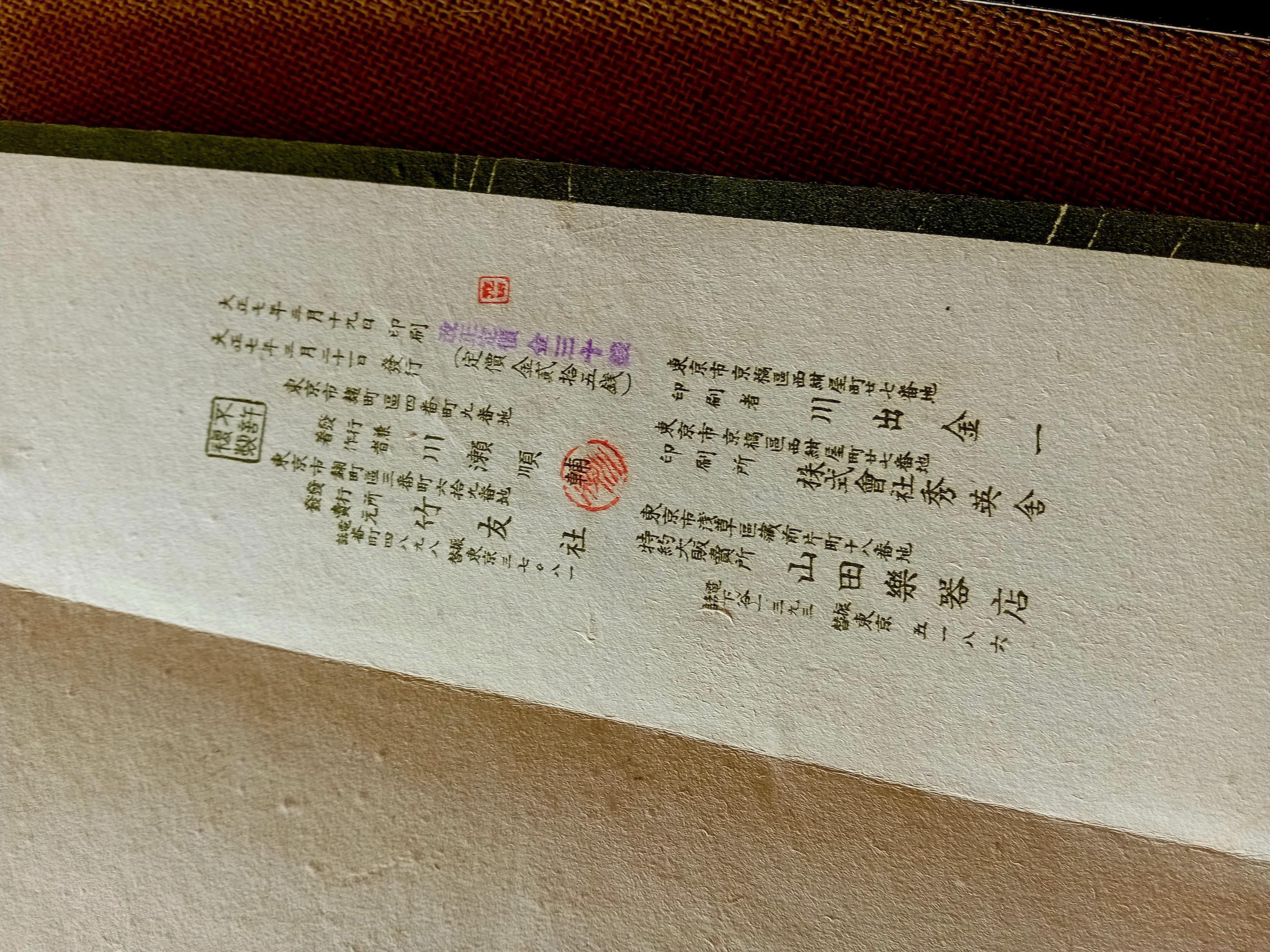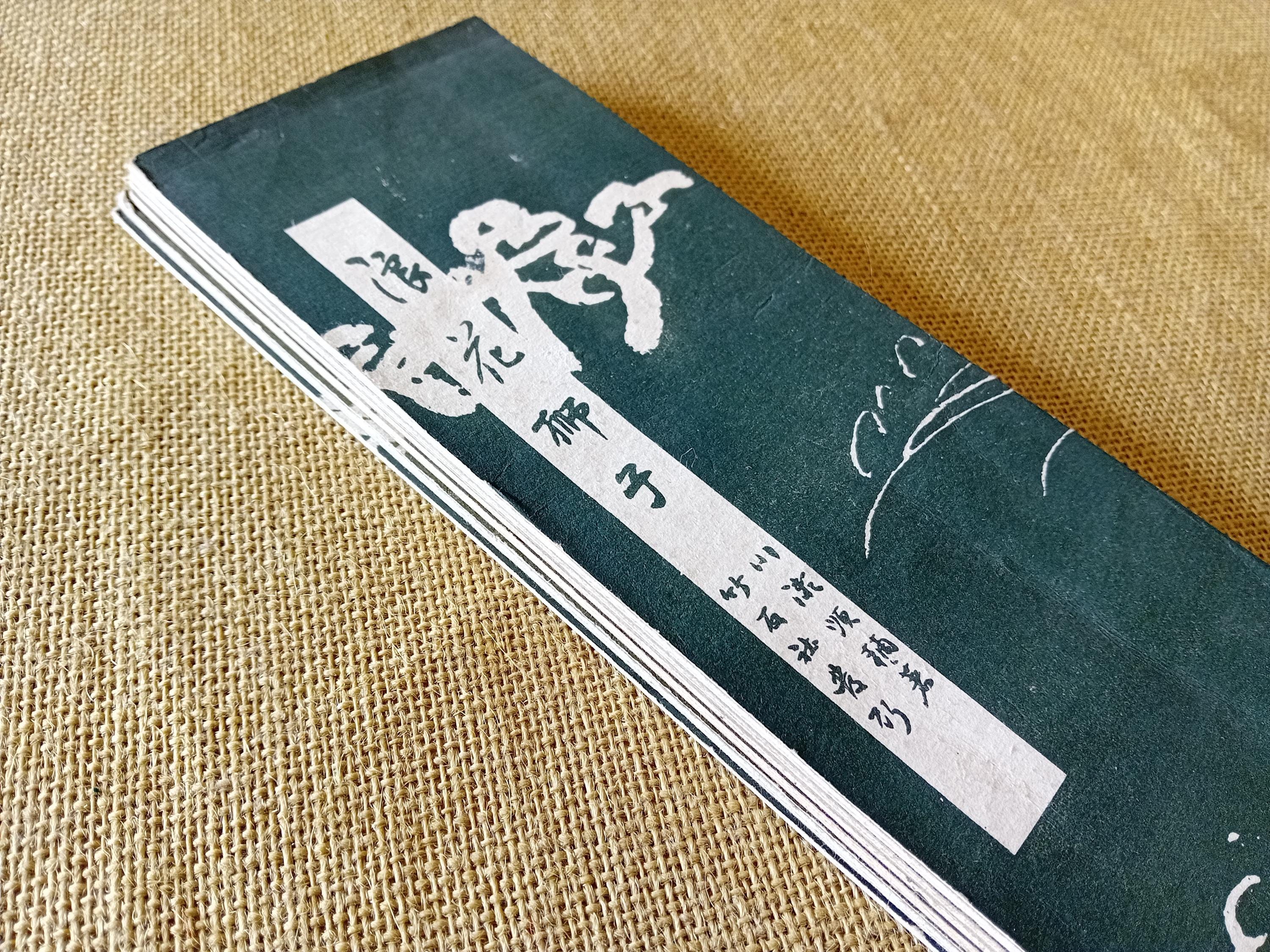Six Japanese Orihon Music Books – Takeyūsha Series (Antique, Taishō era, 1919–1922)
$346.65 $385.17
Traditional Nagauta / Yōfu notation for shamisen and vocal performance
A rare complete set of six original Japanese folding books (orihon) published in Tokyo by Takeyūsha (竹友社) during the Taishō era (1919–1922).
These beautifully printed volumes represent the refined art of nagauta and yōfu — classical vocal and shamisen notation used in traditional Japanese theater and dance.
Each book is printed in vertical notation with editorial markings and subtle red or pencil notes made by a vocal instructor, indicating real use in instruction and rehearsal.
The covers share a unified style — matte paper with delicate white designs (waves, branches, mist) and calligraphic titles.
Size (folded): approx. 30 × 9 cm
Contents of the Set
Yachiyo Shishi (八千代獅子) – Lion of Eternal Ages
A stately piece based on the Shishi-mai lion dance.
Includes an introductory note about longevity and auspicious symbolism.
Chūkei (仲景) – Middle Reflection
A lyrical duet for shamisen and koto.
Features rare rhythmic markers and red performance annotations.
Yume (夢) – Dream
A meditative composition about memory and transience, with editorial marks by Kawase Junsuke (川瀬順輔).
Sengyoku no Maki (千玉の巻) – Scroll of a Thousand Jewels
A central and likely instructional volume, containing detailed rhythm changes (hyōshi).
Shidare no E (枝垂之画) – Picture of Drooping Branches
A gentle, feminine spring motif. Hand-corrected sections likely added by a teacher of the Hanayagi school.
Ōuchiyama (大内山) – The Great Ōuchi Mountain
The final piece of the cycle, composed by Takano Minoru (高野實).
Symbolizes spiritual elevation and closure of the series.
Publisher and Provenance
All six were published by Takeyūsha, edited by Kawase Junsuke (川瀬順輔) and printed by Yamada Gakki-ten (山田楽器店, Tokyo).
They were distributed through major Tokyo and Osaka music houses associated with the Hanayagi and Fujima schools of dance and vocal arts.
The subtle handwritten notes, phrasing signs, and rhythm cues show the set was once used by a professional vocal instructor — a rare glimpse into the practical pedagogy of Taishō-period performance training.
Condition
The set is in good historical condition with light, honest signs of age:
slight paper toning, minor edge wear, and a few studio annotations in pencil and red ink.
The orihon bindings remain firm, the printing crisp, and the folding structure intact.
Such complete sets are extremely rare, as most surviving examples appear individually.
This collection preserves the full teaching cycle of the Takeyūsha Nagauta Series, an invaluable artifact of early 20th-century Japanese musical culture.
Significance
An important record of nagauta and utai notation in transition between Meiji and early Shōwa, blending poetic calligraphy and musical structure.
Comparable sets are held only in specialized archives and are seldom offered for private collectors.
For US buyers: this item enters the United States duty-free.
Shipping from Latvia
Processing time
1-3 business days
Customs and import taxes
Buyers are responsible for any customs and import taxes that may apply. I'm not responsible for delays due to customs.
Payment Options
Returns & Exchanges
I don't accept returns, exchanges, or cancellations
But please contact me if you have any problems with your order.

